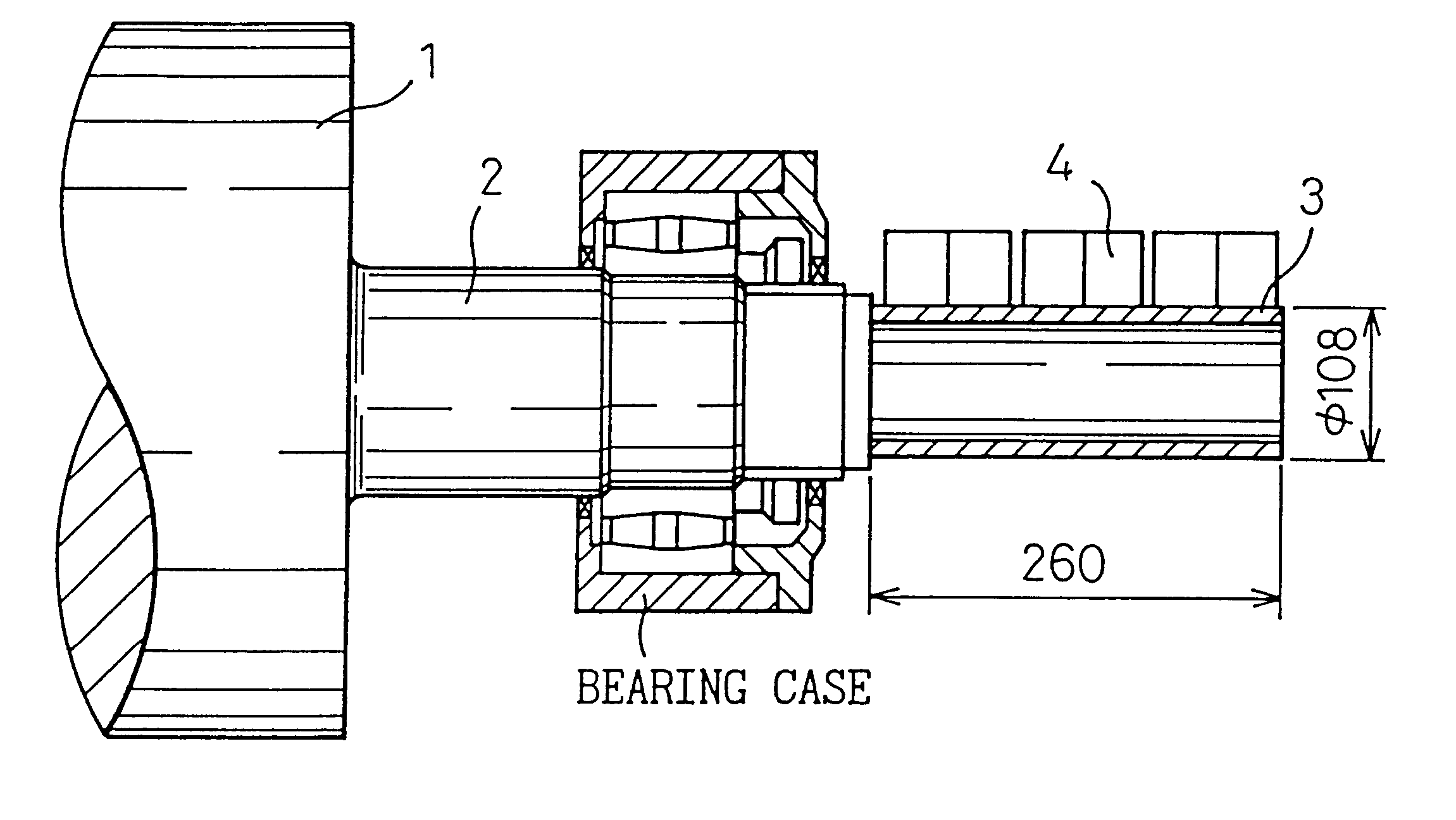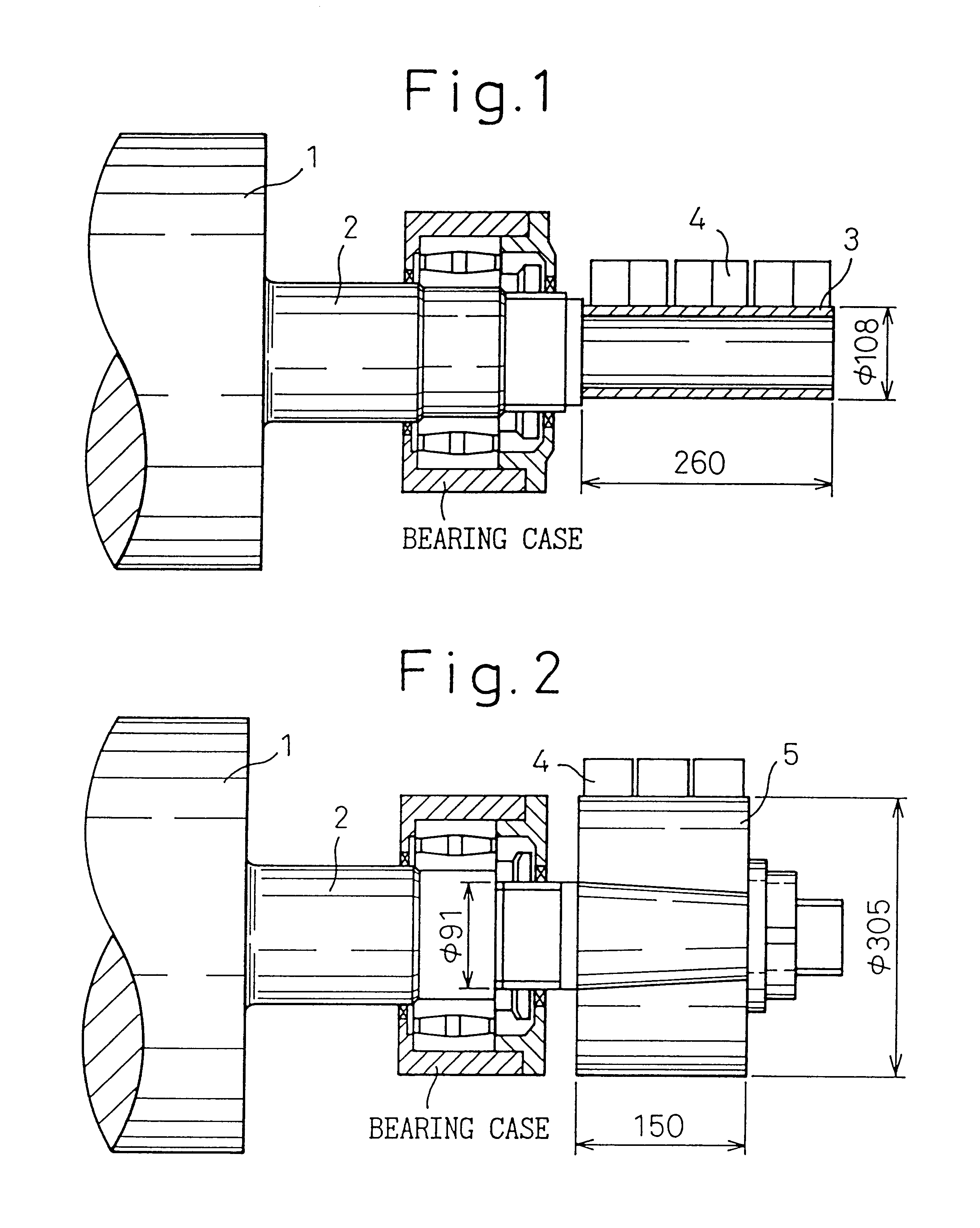Ringless-collector conductor roll
a conductor roll and ringless technology, applied in the direction of electrolysis processes, electrolysis components, cells, etc., can solve the problems of frequent repair of cu plating on the roll shaft, and the cost of the conductor roll, and achieve the effect of increasing the bonding strength between the shaft material steel and the cu plating
- Summary
- Abstract
- Description
- Claims
- Application Information
AI Technical Summary
Benefits of technology
Problems solved by technology
Method used
Image
Examples
Embodiment Construction
Next, the ringless-collector conductor roll of the present invention will be explained in detail with reference to examples.
A conductor roll 1 having a shaft form shown in FIG. 1 was prepared. For the purpose of increasing the bonding strength between the shaft material steel and the Cu plating, a roll shaft portion 2 in FIG. 1 which was masked except for the outer peripheral surface was immersed in an electrolytic solution containing from 250 to 300 g / l of Ni sulfate, from 40 to 60 g / l of Ni chloride, and from 40 to 50 g / l of boric acid, and having a solution temperature of 55.+-.1.degree. C. and a pH of 3.8 to 4.8. Electroplating was then conducted at a current density of 4 A / dm.sup.2 to form a Ni plating layer having a thickness of 5 .mu.m on the outer peripheral surface. After washing with water, the roll shaft portion in FIG. 1 which was masked except for the outer peripheral surface was immersed in an electrolytic solution containing 200 g / l of Cu sulfate, 30 g / l of sulfuric a...
PUM
| Property | Measurement | Unit |
|---|---|---|
| thickness | aaaaa | aaaaa |
| thickness | aaaaa | aaaaa |
| thickness | aaaaa | aaaaa |
Abstract
Description
Claims
Application Information
 Login to View More
Login to View More - R&D
- Intellectual Property
- Life Sciences
- Materials
- Tech Scout
- Unparalleled Data Quality
- Higher Quality Content
- 60% Fewer Hallucinations
Browse by: Latest US Patents, China's latest patents, Technical Efficacy Thesaurus, Application Domain, Technology Topic, Popular Technical Reports.
© 2025 PatSnap. All rights reserved.Legal|Privacy policy|Modern Slavery Act Transparency Statement|Sitemap|About US| Contact US: help@patsnap.com


